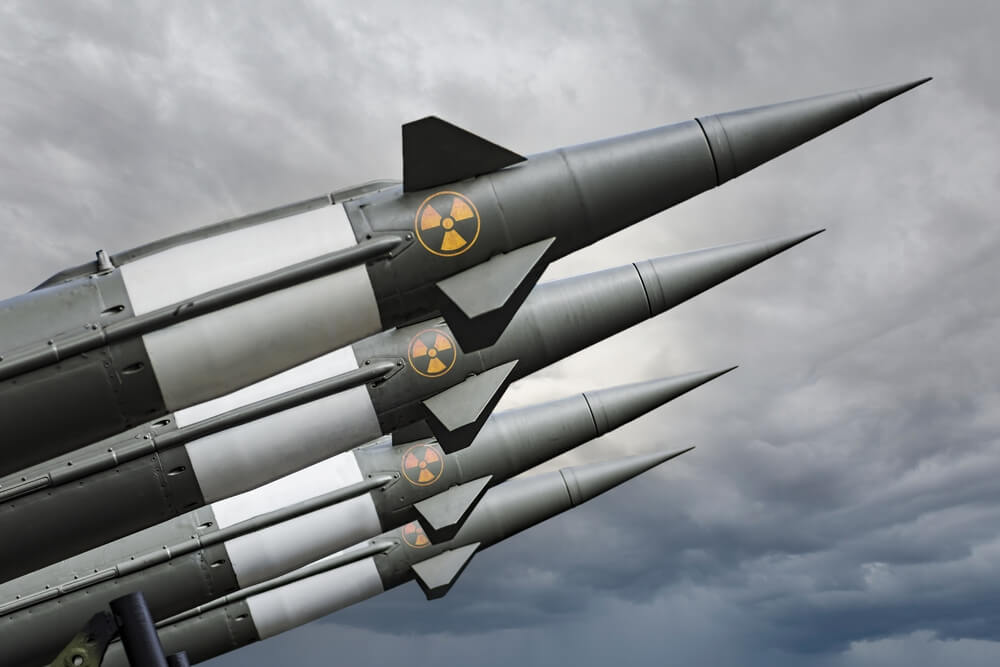On Aug. 6, 1945, the United States dropped an atomic bomb on Hiroshima. Three days later, Nagasaki suffered the same fate. The destruction of these two Japanese cities resulted in over 100,000 immediate deaths, along with countless others permanently affected by radiation.
These events raised profound ethical and moral questions that remain hotly debated to this day. Equally contentious is the security strategy that emerged from the bombings: nuclear deterrence.
Supporters of nuclear deterrence argue that images of the two devastated Japanese cities have helped to maintain peace between nuclear powers. The sheer horror of nuclear weapons, they claim, induces restraint in international relations. The fact that no nuclear weapons have been used since August 1945 suggests that nuclear deterrence is an effective policy.
Opponents of nuclear deterrence argue that a strategy of war prevention that relies on the threat of nuclear annihilation is incompatible with moral and legal principles such as proportionality and the protection of non-combatants in war. Furthermore, they argue that as long as nuclear weapons exist, humanity is condemned to live under the sword of Damocles of nuclear annihilation.
Consequently, the nuclear age has seen many arguments put forward in favor of abolishing nuclear weapons. So far, however, none of them has prevailed over nuclear deterrence. The reason is not because decision-makers are insensitive to nuclear risks, or because of the bureaucratic inertia of defense establishments. If abolitionist arguments have little traction, it is largely due to their own intellectual weaknesses.
The case against nuclear abolition
One example is the argument that nuclear weapons are irrelevant and thus could be safely abolished. Adherents of this view boldly reinterpret key events such as the dropping of the atomic bombs or the Cuban Missile Crisis to demonstrate that there is no link between the existence of nuclear weapons and decisions regarding war and peace.
However, real-life events, such as the Russian attack on Ukraine, the recent destruction of Iran’s nuclear installations by the U.S. and Israel, and the debate about the viability of the U.S. “nuclear umbrella” for Europe suggest that nuclear weapons are very relevant indeed.
Another argument is that nuclear weapons could be abolished by changing societal norms, as was the case with slavery. However, not all norms have equal weight. Abolishing slavery was a moral goal in itself, whereas abolishing nuclear weapons is not. As long as many states believe that nuclear weapons provide security, their abolition will require more than a change in societal attitudes. It will require alternative security measures that all nuclear weapons states and their allies can agree on – alternatives that are nowhere in sight.
If changing norms will not achieve abolition, what about outlawing nuclear weapons outright? This is the aim of the Treaty on the Prohibition of Nuclear Weapons (TPNW), which came into force in 2021. The Treaty stigmatizes nuclear weapons and nuclear deterrence as illegal.
However, as none of the nuclear powers or their allies have signed the TPNW, the Treaty remains ineffective. Russia’s assault on Ukraine, which was accompanied by numerous nuclear threats, has further marginalized that project.
Another approach by nuclear abolitionists is to highlight the hidden costs of nuclear deterrence—such as the health impacts on those living near former test sites or the exploitation of children in uranium mining. While these stories are deeply troubling, they do not fundamentally challenge the logic of deterrence.
Nor will debates framed around gender, “nuclear injustice” or post-colonial ideologies succeed in overturning nuclear deterrence. Attempting to overcome deterrence with “wokeness” is a lost cause.
Deterrence requires a focus on safety
A more effective way to challenge the reliance on nuclear weapons is to reveal nuclear accidents or near-misses. Examples include the loss of a U.S. hydrogen bomb near Spain in the 1960s and the Soviet Union’s alleged fear that a NATO exercise in the 1980s was preparation for an actual attack. Closer examination reveals that these incidents were far less dramatic than sometimes portrayed. Still, they serve as a stark reminder that nuclear deterrence requires the highest safety standards to avoid catastrophic failure.
Lastly, abolitionists make the moral case against nuclear deterrence. They argue that a policy that might result in mass casualties cannot be ethically defensible at all. However, the prevailing view holds that nuclear deterrence can be justified as a risky yet necessary strategy, unless a better means of preventing major war has been found.
To be sure, even 80 years of nuclear non-use do not justify the conclusion that the system is fail-safe. But the fact is that two world wars and the Holocaust occurred in a nuclear-free world. Those who argue for a non-nuclear future should think again.







